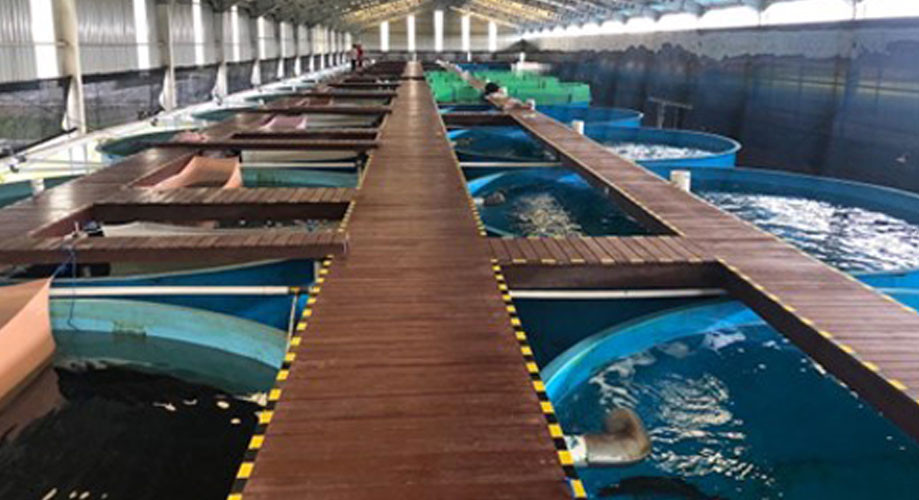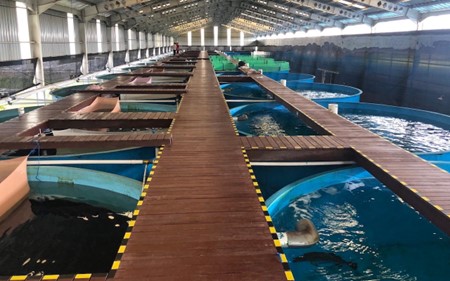Japfa Group announces breakthrough with successful first step in tropical eel reproduction: A groundbreaking achievement in aquaculture and conservation

Singapore/Jakarta, 19 August 2024 – The Aquaculture Research Center (ARC), a cutting-edge facility established by PT Suri Tani Pemuka (STP), a member of the Japfa Group, has reached a groundbreaking milestone in aquaculture by successfully achieving the first step in reproducing the high-value tropical eel, Anguilla bicolor, marking the first such accomplishment worldwide. This pioneering development marks a major advancement in the sustainable management of eel populations, with promising implications for both commercial aquaculture and eel conservation efforts.
Located in Banyuwangi, East Java, Indonesia, the ARC is renowned for its research and development in aquaculture, regularly collaborating with various internationally recognised institutions in aquaculture such as Higher Institution Centres of Excellence, Borneo Marine Research Institute of Universiti Malaysia Sabah (UMS) and Kindai University.
Tropical eel, with the scientific name Anguilla bicolor, is considered a high-value species due to its exceptional demand in culinary markets across Asia and beyond. This eel is prized for its rich flavour and high nutritional content, making it a popular choice for premium dishes. Sustainable aquaculture of tropical eel addresses the growing demand, while reducing pressure on wild populations, thus contributing to biodiversity conservation and ecological balance.
This success in the first step of reproducing tropical eel not only represents a historic achievement in aquaculture but also underscores Japfa Group’s commitment to sustainability in food production, paving the way for future innovations in the aquaculture industry.
Breeding eel: a fascinating challenge
As eel populations continue to decline globally, finding a way to breed them in captivity has become crucial for conservation efforts and commercial purposes.
The complex and mysterious life cycle of eels has made it a challenge to reproduce eels in captivity. Eels travel thousands of kilometres from freshwater rivers to deep oceans, making the conditions for their reproduction very hard to replicate outside their natural habitat. Until now, eel farming has relied on catching juvenile eels, known as glass eels, in the wild which are then raised to market size in farms. However, this approach is no longer sustainable as it reduces wild eel populations that are already at risk due to overfishing and habitat loss.
A historic milestone in eel aquaculture
The ARC research team together with Prof. Dr. Senoo Shigeharu have overcome these critical challenges and have successfully achieved the first step of reproduction of tropical eel in captivity. Utilising advanced aquaculture techniques and rearing methods developed by ARC, the team successfully hatched 70,000 larvae, achieving larval rearing for 11 days. This demonstrates the potential for large-scale production of tropical eel in aquaculture settings.
“This achievement marks a significant milestone in our efforts to sustainably manage eel populations, as for the first time we successfully hatched tropical eel in a controlled environment” said Ardi Budiono, President Director of STP. “We believe that the ability to reproduce eel in captivity will have a substantial impact on the aquaculture industry in Asia and globally. To ensure the sustainability of tropical eel populations, STP will continue to implement sustainable eel farming practices, conducting eel research and supporting our efforts to restock eels in their natural habitat, as part of our commitment to sustainable aquaculture.”
Implications for conservation and the industry
The successful first step of reproduction of tropical eels in captivity is not only a significant advancement in aquaculture technology, but also provides hope for the conservation of the tropical eel, Anguilla bicolor, which is classified as "Near Threatened" on the International Union for Conservation of Nature (IUCN) Red List1. By reducing the reliance on wild catch, this research can contribute to the conservation of tropical eel populations while responsibly and sustainably meeting the growing consumer demand. This breakthrough in breeding supports sustainable aquaculture practices that could protect natural eel populations from overfishing.
As a leading industrialised agri-food company, Japfa consistently aims to use the right breeds and farming methodologies to ensure the efficient production of affordable animal proteins on a large scale in the tropical climate.
This breakthrough in tropical eel breeding aligns with Japfa’s commitment to efficient and sustainable food production across its diverse protein portfolio.
“We have seen the opportunity to apply the principles of livestock production to aquaculture and eel farming, with the goal to increase efficiency and reduce dependency on wild-caught glass eels” said Renaldo Santosa, President Director of PT Japfa Comfeed Indonesia Tbk and Executive Director of Japfa Group. “By breeding tropical eels in captivity, we reduce the pressure on wild populations and contribute to biodiversity and ecosystem health. Today’s success is a testament to the power of vision, perseverance and innovation, as well as the importance of collaboration between industry and academia in addressing the challenges of sustainable food production”.

Image 1. Anguilla bicolor eel larvae at 11 days after hatching (dAH) featuring an open mouth, pigmented eyes, and elongated body. Scale bar: 1 cm.

Image 2. Brood fish tanks in the Aquaculture Research Center (ARC). Each tank is 3 meters deep and 6 meters in diameter, arranged in a continuous series. These tanks are designed to produce high-quality eggs from important aquaculture species.

Image 3. ARC Team checks adult eel growth.


